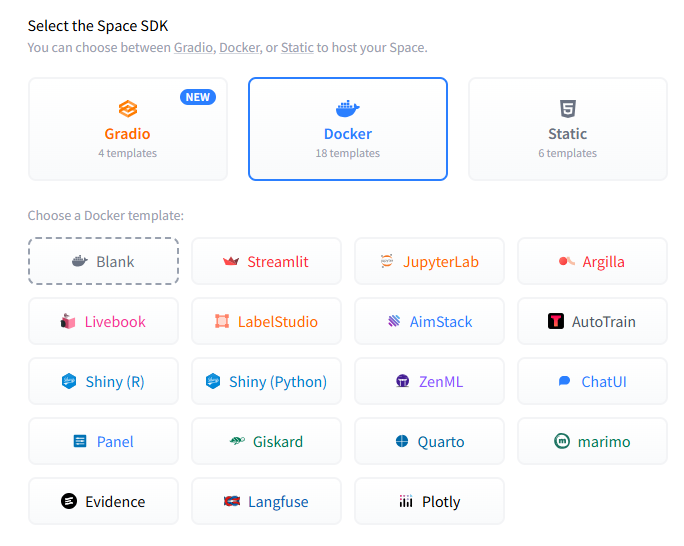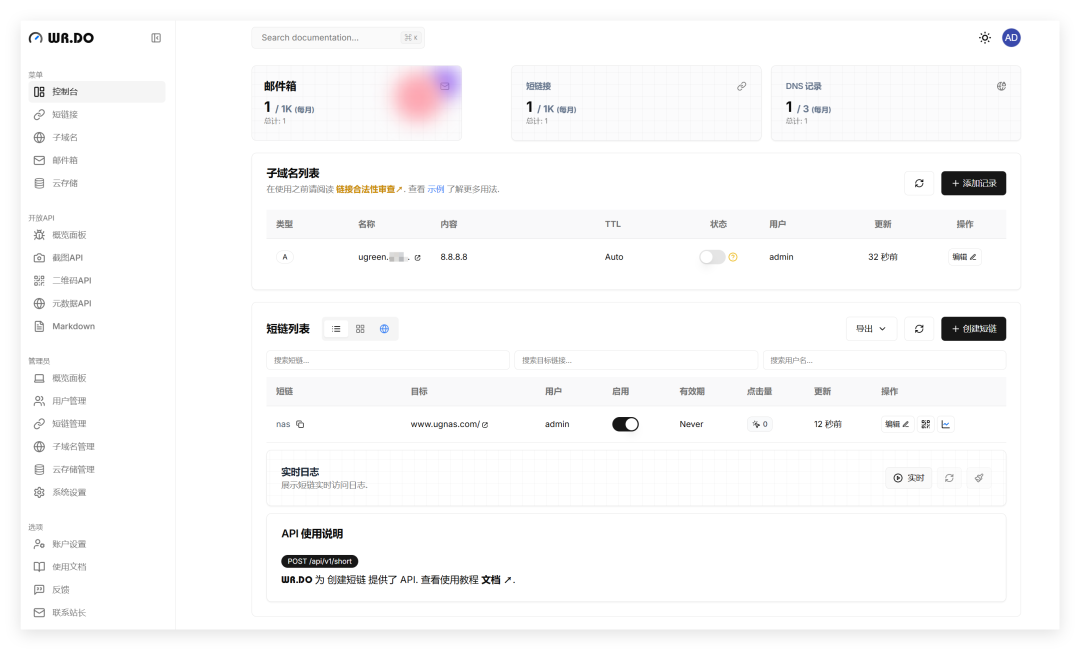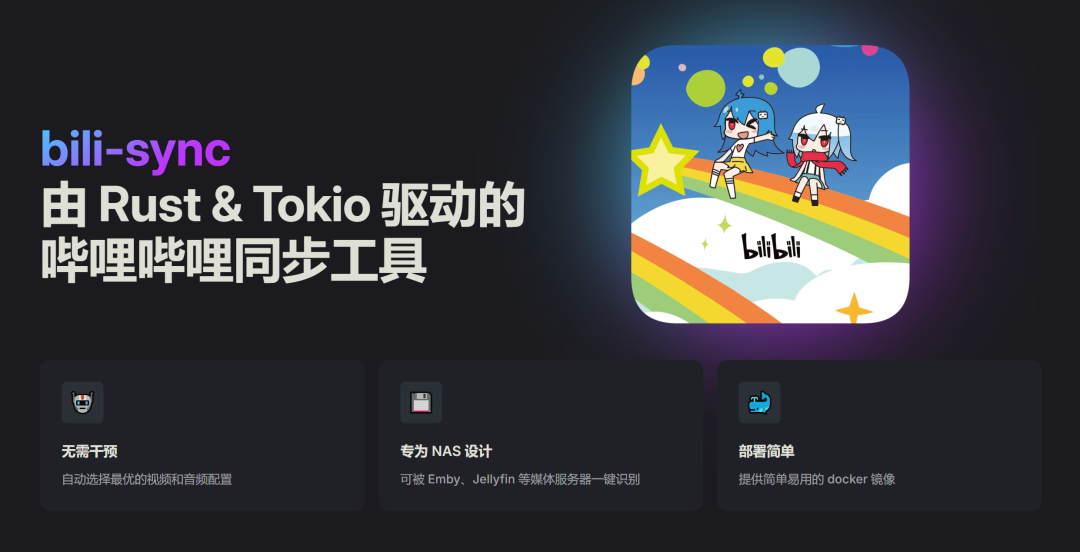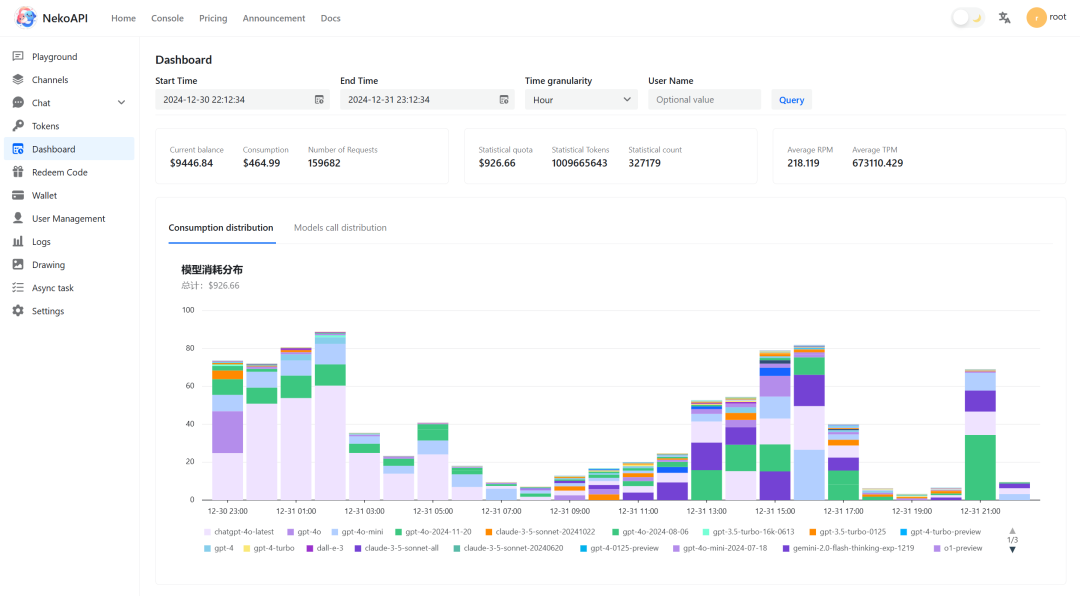01 环境说明
操作系统: Rocky Linux release 9.3
containerd 版本:1.6.26
kubernetes 版本:v1.28.2
K8S master 节点 IP:192.168.2.175
K8S master 节点 IP:192.168.2.176
K8S master 节点 IP:192.168.2.177
K8S worker 节点 IP:192.168.2.185
K8S worker 节点 IP:192.168.2.187
K8S worker 节点 IP:192.168.3.62
K8S worker 节点 IP:192.168.3.70
VIP 192.168.3.251
网络插件:flannel
kube-proxy 网络转发: ipvs
kubernetes 源: 阿里云镜像站
service-cidr:10.96.0.0/16
pod-network-cidr:10.244.0.0/16
02 部署准备
注意:此操作在所有节点进行
1、修改内核参数
vim /etc/sysctl.conf
vm.swappiness=0
net.ipv4.ip_forward = 1
net.bridge.bridge-nf-call-ip6tables = 1
net.bridge.bridge-nf-call-iptables = 1
net.bridge.bridge-nf-call-arptables=1
sysctl -p
2、关闭 swap
swapoff -a && sysctl -w vm.swappiness=0
修改 fstab 不在挂载 swap
vi /etc/fstab
/dev/mapper/centos-swap swap swap defaults 0 0
3、将 SELinux 设置为 disabled 模式
setenforce 0
sed -i 's/^SELINUX=enforcing$/SELINUX=disabled/' /etc/selinux/config
4、cgroup2 开启(经常升级内核不建议执行不然会出现升级后不能启动,只能用旧内核启动的问题)
grubby \
--update-kernel=ALL \
--args="systemd.unified_cgroup_hierarchy=1"
5、内核模块加载
cat <6、重启系统使上面配置生效
reboot
7、安装依赖
$ dnf install -y dnf-utils ipvsadm telnet wget net-tools conntrack ipset jq iptables curl sysstat libseccomp socat nfs-utils fuse fuse-devel
03 安装 containerd
1、导入 containerd 源
$ yum-config-manager --add-repo http://mirrors.aliyun.com/docker-ce/linux/centos/docker-ce.repo
2、安装 containerd
$ yum install containerd.io
04 containerd 配置
1、配置 containerd
#生成默认配置
containerd config default > /etc/containerd/config.toml
#修改配置
sandbox_image = "registry.k8s.io/pause:3.6" 改成国内地址
sandbox_image = "registry.aliyuncs.com/google_containers/pause:3.9"
Updated config for group driver changed..
[plugins."io.containerd.grpc.v1.cri".containerd.runtimes.runc]
...
[plugins."io.containerd.grpc.v1.cri".containerd.runtimes.runc.options]
SystemdCgroup = true
2、 创建存储挂在数据
mkdir -p /var/lib/containerd/
mkdir -p /apps/containerd/ # 改成你大硬盘路径
/etc/fstab
echo "/apps/containerd /var/lib/containerd none defaults,bind,nofail 0 0" >>/etc/fstab
systemctl daemon-reload
# 挂在
mount -a
# 查看是否挂在
[root@k8s-master-1 containerd]# mount | grep containerd
/dev/vda3 on /var/lib/containerd type xfs (rw,relatime,attr2,inode64,logbufs=8,logbsize=32k,noquota)
3 开启开机启动并启动
systemctl enable containerd.service --now
4、查看进程是否启动
systemctl status containerd.service
5、 查看数据盘是否有文件有证明挂在正确
ll /apps/containerd/
6、 创建 crictl 配置
cat <8、查看配置是否生效
[root@k8s-master-1 containerd]# crictl info| grep sandboxImage
"sandboxImage": "registry.aliyuncs.com/google_containers/pause:3.6",
[root@k8s-master-1 containerd]# crictl info| grep SystemdCgroup
"SystemdCgroup": true
05 安装 kubelet kubeadm kubectl
1、 导入 repo 源
# 注意,这里就是用 el7 的源,google 没有为 rhel8、rhel9 再单独打包
cat <06 配置 kubelet
1、 创建 kubelet 存储挂在
mkdir /var/lib/kubelet
mkdir /apps/kubelet
/etc/fstab
echo "/apps/kubelet /var/lib/kubelet none defaults,bind,nofail 0 0" >>/etc/fstab
systemctl daemon-reload
# 挂在
mount -a
2、 查看是否挂在
[root@k8s-master-1]# mount | grep kubelet
/dev/vda3 on /var/lib/kubelet type xfs (rw,relatime,attr2,inode64,logbufs=8,logbsize=32k,noquota)
6、刷新 service
systemctl daemon-reload
# 设置 kubelet 开机启动
systemctl enable kubelet.service
# 查看启动状态
systemctl status kubelet.service
7、创建 lb master1 节点
# 官方文档: https://github.com/kubernetes/kubeadm/blob/main/docs/ha-considerations.md#kube-vip
# 可使用镜像 juestnow/kube-vip:v0.6.4
# KVVERSION=$(curl -sL https://api.github.com/repos/kube-vip/kube-vip/releases | jq -r ".[0].name")
export KVVERSION='v0.6.4'
export VIP=192.168.3.251
export INTERFACE='eth0'
# 简化命令,将命令设置为别名
alias kube-vip="ctr run --rm --net-host docker.io/juestnow/kube-vip:$KVVERSION vip /kube-vip"
# 下载镜像
ctr images pull docker.io/juestnow/kube-vip:$KVVERSION
# 执行命令创建 yaml
kube-vip manifest pod \
--interface $INTERFACE \
--vip $VIP \
--controlplane \
--arp \
--leaderElection | tee /etc/kubernetes/manifests/kube-vip.yaml
# 修改镜像策略
sed -i 's/Always/IfNotPresent/g' /etc/kubernetes/manifests/kube-vip.yaml
sed -i "s#ghcr.io/kube-vip/kube-vip:v0.6.4#docker.io/juestnow/kube-vip:$KVVERSION#g" /etc/kubernetes/manifests/kube-vip.yaml
# 下载镜像
crictl pull docker.io/juestnow/kube-vip:$KVVERSION
# 修改后内容
cat /etc/kubernetes/manifests/kube-vip.yaml
apiVersion: v1
kind: Pod
metadata:
creationTimestamp: null
name: kube-vip
namespace: kube-system
spec:
containers:
- args:
- manager
env:
- name: vip_arp
value: "true"
- name: port
value: "6443"
- name: vip_interface
value: eth0
- name: vip_cidr
value: "32"
- name: cp_enable
value: "true"
- name: cp_namespace
value: kube-system
- name: vip_ddns
value: "false"
- name: vip_leaderelection
value: "true"
- name: vip_leasename
value: plndr-cp-lock
- name: vip_leaseduration
value: "5"
- name: vip_renewdeadline
value: "3"
- name: vip_retryperiod
value: "1"
- name: vip_address
value: 192.168.3.251
- name: prometheus_server
value: :2112
image: docker.io/juestnow/kube-vip:v0.6.4
imagePullPolicy: IfNotPresent
name: kube-vip
resources: {}
securityContext:
capabilities:
add:
- NET_ADMIN
- NET_RAW
volumeMounts:
- mountPath: /etc/kubernetes/admin.conf
name: kubeconfig
hostAliases:
- hostnames:
- kubernetes
ip: 127.0.0.1
hostNetwork: true
volumes:
- hostPath:
path: /etc/kubernetes/admin.conf
name: kubeconfig
status: {}
# 最后将该配置文件放到所有控制平面的/etc/kubernetes/manifests
scp -rp /etc/kubernetes/manifests/kube-vip.yaml root@192.168.2.176:/etc/kubernetes/manifests/
scp -rp /etc/kubernetes/manifests/kube-vip.yaml root@192.168.2.177:/etc/kubernetes/manifests/
07 初始化 kubernetes master1 执行
kubeadm init --apiserver-advertise-address=0.0.0.0 \
--apiserver-cert-extra-sans=127.0.0.1 \
--kubernetes-version 1.28.2 \
--image-repository=registry.aliyuncs.com/google_containers \
--ignore-preflight-errors=all \
--service-cidr=10.96.0.0/16 \
--pod-network-cidr=10.244.0.0/16 \
--ignore-preflight-errors=all \
--upload-certs \
--control-plane-endpoint=192.168.3.251 \
--cri-socket=unix:///var/run/containerd/containerd.sock
#初始化过程
[root@k8s-master-1 tmp]# kubeadm init --apiserver-advertise-address=0.0.0.0 \
--apiserver-cert-extra-sans=127.0.0.1 \
--kubernetes-version 1.28.2 \
--image-repository=registry.aliyuncs.com/google_containers \
--ignore-preflight-errors=all \
--service-cidr=10.96.0.0/16 \
--pod-network-cidr=10.244.0.0/16 \
--ignore-preflight-errors=all \
--upload-certs \
--control-plane-endpoint=192.168.3.251 \
--cri-socket=unix:///var/run/containerd/containerd.sock
[init] Using Kubernetes version: v1.28.2
[preflight] Running pre-flight checks
[WARNING Hostname]: hostname "k8s-master-1" could not be reached
[WARNING Hostname]: hostname "k8s-master-1": lookup k8s-master-1 on 192.168.2.84:53: no such host
[WARNING FileContent--proc-sys-net-bridge-bridge-nf-call-iptables]: /proc/sys/net/bridge/bridge-nf-call-iptables does not exist
[preflight] Pulling images required for setting up a Kubernetes cluster
[preflight] This might take a minute or two, depending on the speed of your internet connection
[preflight] You can also perform this action in beforehand using 'kubeadm config images pull'
W0111 19:59:33.239720 811848 checks.go:835] detected that the sandbox image "registry.aliyuncs.com/google_containers/pause:3.6" of the container runtime is inconsistent with that used by kubeadm. It is recommended that using "registry.aliyuncs.com/google_containers/pause:3.9" as the CRI sandbox image.
[certs] Using certificateDir folder "/etc/kubernetes/pki"
[certs] Generating "ca" certificate and key
[certs] Generating "apiserver" certificate and key
[certs] apiserver serving cert is signed for DNS names [kubernetes kubernetes.default kubernetes.default.svc kubernetes.default.svc.cluster.local rocky] and IPs [10.96.0.1 192.168.2.175 192.168.3.251 127.0.0.1]
[certs] Generating "apiserver-kubelet-client" certificate and key
[certs] Generating "front-proxy-ca" certificate and key
[certs] Generating "front-proxy-client" certificate and key
[certs] Generating "etcd/ca" certificate and key
[certs] Generating "etcd/server" certificate and key
[certs] etcd/server serving cert is signed for DNS names [localhost k8s-master-1] and IPs [192.168.2.175 127.0.0.1 ::1]
[certs] Generating "etcd/peer" certificate and key
[certs] etcd/peer serving cert is signed for DNS names [localhost k8s-master-1] and IPs [192.168.2.175 127.0.0.1 ::1]
[certs] Generating "etcd/healthcheck-client" certificate and key
[certs] Generating "apiserver-etcd-client" certificate and key
[certs] Generating "sa" key and public key
[kubeconfig] Using kubeconfig folder "/etc/kubernetes"
[kubeconfig] Writing "admin.conf" kubeconfig file
[kubeconfig] Writing "kubelet.conf" kubeconfig file
[kubeconfig] Writing "controller-manager.conf" kubeconfig file
[kubeconfig] Writing "scheduler.conf" kubeconfig file
[etcd] Creating static Pod manifest for local etcd in "/etc/kubernetes/manifests"
[control-plane] Using manifest folder "/etc/kubernetes/manifests"
[control-plane] Creating static Pod manifest for "kube-apiserver"
[control-plane] Creating static Pod manifest for "kube-controller-manager"
[control-plane] Creating static Pod manifest for "kube-scheduler"
[kubelet-start] Writing kubelet environment file with flags to file "/var/lib/kubelet/kubeadm-flags.env"
[kubelet-start] Writing kubelet configuration to file "/var/lib/kubelet/config.yaml"
[kubelet-start] Starting the kubelet
[wait-control-plane] Waiting for the kubelet to boot up the control plane as static Pods from directory "/etc/kubernetes/manifests". This can take up to 4m0s
[apiclient] All control plane components are healthy after 7.563962 seconds
[upload-config] Storing the configuration used in ConfigMap "kubeadm-config" in the "kube-system" Namespace
[kubelet] Creating a ConfigMap "kubelet-config" in namespace kube-system with the configuration for the kubelets in the cluster
[upload-certs] Storing the certificates in Secret "kubeadm-certs" in the "kube-system" Namespace
[upload-certs] Using certificate key:
c6a80e1929786899137bb0a765323fa0cb7c14fb8c0bedb61a0eaf1583a13abd
[mark-control-plane] Marking the node rocky as control-plane by adding the labels: [node-role.kubernetes.io/control-plane node.kubernetes.io/exclude-from-external-load-balancers]
[mark-control-plane] Marking the node rocky as control-plane by adding the taints [node-role.kubernetes.io/control-plane:NoSchedule]
[bootstrap-token] Using token: u9ryln.7f9t2ih8v1es5d79
[bootstrap-token] Configuring bootstrap tokens, cluster-info ConfigMap, RBAC Roles
[bootstrap-token] Configured RBAC rules to allow Node Bootstrap tokens to get nodes
[bootstrap-token] Configured RBAC rules to allow Node Bootstrap tokens to post CSRs in order for nodes to get long term certificate credentials
[bootstrap-token] Configured RBAC rules to allow the csrapprover controller automatically approve CSRs from a Node Bootstrap Token
[bootstrap-token] Configured RBAC rules to allow certificate rotation for all node client certificates in the cluster
[bootstrap-token] Creating the "cluster-info" ConfigMap in the "kube-public" namespace
[kubelet-finalize] Updating "/etc/kubernetes/kubelet.conf" to point to a rotatable kubelet client certificate and key
[addons] Applied essential addon: CoreDNS
[addons] Applied essential addon: kube-proxy
Your Kubernetes control-plane has initialized successfully!
To start using your cluster, you need to run the following as a regular user:
mkdir -p $HOME/.kube
sudo cp -i /etc/kubernetes/admin.conf $HOME/.kube/config
sudo chown $(id -u):$(id -g) $HOME/.kube/config
Alternatively, if you are the root user, you can run:
export KUBECONFIG=/etc/kubernetes/admin.conf
You should now deploy a pod network to the cluster.
Run "kubectl apply -f [podnetwork].yaml" with one of the options listed at:
https://kubernetes.io/docs/concepts/cluster-administration/addons/
You can now join any number of the control-plane node running the following command on each as root:
kubeadm join 192.168.3.251:6443 --token vx5j0a.7n1jgk7cj7hffkmy \
--discovery-token-ca-cert-hash sha256:6055c9951d7d92d1243006e973a41a375b71b8e20ae4ccdf35ac4a7edfd4531a \
--control-plane --certificate-key 5da3036c3748773980d0cc9ee4352ace20f6b3a5fbee5a5aad2a9ff0bba3ccd2
Please note that the certificate-key gives access to cluster sensitive data, keep it secret!
As a safeguard, uploaded-certs will be deleted in two hours; If necessary, you can use
"kubeadm init phase upload-certs --upload-certs" to reload certs afterward.
Then you can join any number of worker nodes by running the following on each as root:
kubeadm join 192.168.3.251:6443 --token vx5j0a.7n1jgk7cj7hffkmy \
--discovery-token-ca-cert-hash sha256:6055c9951d7d92d1243006e973a41a375b71b8e20ae4ccdf35ac4a7edfd4531a
#错误排除
journalctl -u kubelet
# 查看集群状态
[root@k8s-master-1 apps]# kubectl get cs
Warning: v1 ComponentStatus is deprecated in v1.19+
NAME STATUS MESSAGE ERROR
scheduler Healthy ok
controller-manager Healthy ok
etcd-0 Healthy ok
# 查看集群 pod
[root@k8s-master-1 apps]# kubectl get pod -A
NAMESPACE NAME READY STATUS RESTARTS AGE
kube-system coredns-66f779496c-dk8sr 0/1 Pending 0 4m40s
kube-system coredns-66f779496c-vmqcl 0/1 Pending 0 4m40s
kube-system etcd-k8s-master-1 1/1 Running 1 4m52s
kube-system kube-apiserver-k8s-master-1 1/1 Running 1 4m57s
kube-system kube-controller-manager-k8s-master-1 1/1 Running 1 4m52s
kube-system kube-proxy-rmc6j 1/1 Running 0 4m40s
kube-system kube-scheduler-k8s-master-1 1/1 Running 1 4m53s
# 修改 kube-proxy 为 ipvs
kubectl -n kube-system edit cm kube-proxy
logging:
flushFrequency: 0
options:
json:
infoBufferSize: "0"
verbosity: 0
metricsBindAddress: ""
mode: "ipvs" # 添加 ipvs
nodePortAddresses: null
# 让配置生效
kubectl -n kube-system delete pod kube-proxy-rmc6j
# 查看 kube-ipvs0 网卡是否创建
[root@k8s-master-1 apps]# ip a | grep kube-ipvs0
3: kube-ipvs0: <BROADCAST,NOARP> mtu 1500 qdisc noop state DOWN group default
inet 10.96.0.1/32 scope global kube-ipvs0
inet 10.96.0.10/32 scope global kube-ipvs0
# 查看 ipvs 信息
[root@k8s-master-1 apps]# ipvsadm -ln
IP Virtual Server version 1.2.1 (size=4096)
Prot LocalAddress:Port Scheduler Flags
-> RemoteAddress:Port Forward Weight ActiveConn InActConn
TCP 10.96.0.1:443 rr
-> 192.168.2.175:6443 Masq 1 0 0
TCP 10.96.0.10:53 rr
TCP 10.96.0.10:9153 rr
UDP 10.96.0.10:53 rr
08 部署 master2,master3 执行
# kubeadm join 192.168.3.251:6443 --token u9ryln.7f9t2ih8v1es5d79 \
--discovery-token-ca-cert-hash sha256:2c8298c1e572f37919d6df24cb80984b421a25ffd06bcc8ba522afb0ce9a5f83 \
--control-plane --certificate-key c6a80e1929786899137bb0a765323fa0cb7c14fb8c0bedb61a0eaf1583a13abd
[root@k8s-master-2 tmp]# kubeadm join 192.168.3.251:6443 --token vx5j0a.7n1jgk7cj7hffkmy \
> --discovery-token-ca-cert-hash sha256:6055c9951d7d92d1243006e973a41a375b71b8e20ae4ccdf35ac4a7edfd4531a \
> --control-plane --certificate-key 5da3036c3748773980d0cc9ee4352ace20f6b3a5fbee5a5aad2a9ff0bba3ccd2
W0111 20:26:07.335263 8470 initconfiguration.go:120] Usage of CRI endpoints without URL scheme is deprecated and can cause kubelet errors in the future. Automatically prepending scheme "unix" to the "criSocket" with value "/var/run/cri-docker/cri-docker.sock". Please update your configuration!
[preflight] Running pre-flight checks
[WARNING Hostname]: hostname "k8s-master-2" could not be reached
[WARNING Hostname]: hostname "k8s-master-2": lookup k8s-master-2 on 192.168.2.84:53: no such host
[preflight] Reading configuration from the cluster...
[preflight] FYI: You can look at this config file with 'kubectl -n kube-system get cm kubeadm-config -o yaml'
[preflight] Running pre-flight checks before initializing the new control plane instance
[preflight] Pulling images required for setting up a Kubernetes cluster
[preflight] This might take a minute or two, depending on the speed of your internet connection
[preflight] You can also perform this action in beforehand using 'kubeadm config images pull'
[download-certs] Downloading the certificates in Secret "kubeadm-certs" in the "kube-system" Namespace
[download-certs] Saving the certificates to the folder: "/etc/kubernetes/pki"
[certs] Using certificateDir folder "/etc/kubernetes/pki"
[certs] Generating "etcd/healthcheck-client" certificate and key
[certs] Generating "etcd/server" certificate and key
[certs] etcd/server serving cert is signed for DNS names [k8s-master-2 localhost] and IPs [192.168.2.176 127.0.0.1 ::1]
[certs] Generating "etcd/peer" certificate and key
[certs] etcd/peer serving cert is signed for DNS names [k8s-master-2 localhost] and IPs [192.168.2.176 127.0.0.1 ::1]
[certs] Generating "apiserver-etcd-client" certificate and key
[certs] Generating "apiserver" certificate and key
[certs] apiserver serving cert is signed for DNS names [k8s-master-2 kubernetes kubernetes.default kubernetes.default.svc kubernetes.default.svc.cluster.local] and IPs [10.96.0.1 192.168.2.176 192.168.3.251 127.0.0.1]
[certs] Generating "apiserver-kubelet-client" certificate and key
[certs] Generating "front-proxy-client" certificate and key
[certs] Valid certificates and keys now exist in "/etc/kubernetes/pki"
[certs] Using the existing "sa" key
[kubeconfig] Generating kubeconfig files
[kubeconfig] Using kubeconfig folder "/etc/kubernetes"
[kubeconfig] Writing "admin.conf" kubeconfig file
[kubeconfig] Writing "controller-manager.conf" kubeconfig file
[kubeconfig] Writing "scheduler.conf" kubeconfig file
[control-plane] Using manifest folder "/etc/kubernetes/manifests"
[control-plane] Creating static Pod manifest for "kube-apiserver"
[control-plane] Creating static Pod manifest for "kube-controller-manager"
[control-plane] Creating static Pod manifest for "kube-scheduler"
[check-etcd] Checking that the etcd cluster is healthy
[kubelet-start] Writing kubelet configuration to file "/var/lib/kubelet/config.yaml"
[kubelet-start] Writing kubelet environment file with flags to file "/var/lib/kubelet/kubeadm-flags.env"
[kubelet-start] Starting the kubelet
[kubelet-start] Waiting for the kubelet to perform the TLS Bootstrap...
[etcd] Announced new etcd member joining to the existing etcd cluster
[etcd] Creating static Pod manifest for "etcd"
[etcd] Waiting for the new etcd member to join the cluster. This can take up to 40s
[kubelet-check] Initial timeout of 40s passed.
The 'update-status' phase is deprecated and will be removed in a future release. Currently it performs no operation
[mark-control-plane] Marking the node k8s-master-2 as control-plane by adding the labels: [node-role.kubernetes.io/control-plane node.kubernetes.io/exclude-from-external-load-balancers]
[mark-control-plane] Marking the node k8s-master-2 as control-plane by adding the taints [node-role.kubernetes.io/control-plane:NoSchedule]
This node has joined the cluster and a new control plane instance was created:
* Certificate signing request was sent to apiserver and approval was received.
* The Kubelet was informed of the new secure connection details.
* Control plane label and taint were applied to the new node.
* The Kubernetes control plane instances scaled up.
* A new etcd member was added to the local/stacked etcd cluster.
To start administering your cluster from this node, you need to run the following as a regular user:
mkdir -p $HOME/.kube
sudo cp -i /etc/kubernetes/admin.conf $HOME/.kube/config
sudo chown $(id -u):$(id -g) $HOME/.kube/config
Run 'kubectl get nodes' to see this node join the cluster.
# 设置 kubelet 开机启动
systemctl enable kubelet.service
# 查看启动状态
systemctl status kubelet.service
#错误排除
journalctl -u kubelet
# master 节点查看节点
[root@k8s-master-1 tmp]# kubectl get nodes
NAME STATUS ROLES AGE VERSION
k8s-master-1 NotReady control-plane 5m56s v1.28.2
k8s-master-2 NotReady control-plane 10m v1.28.2
k8s-master-3 NotReady control-plane 10m v1.28.2
09 部署 node 节点(所有 node 节点执行)
# kubeadm join 192.168.3.251:6443 --token vx5j0a.7n1jgk7cj7hffkmy \
--discovery-token-ca-cert-hash sha256:6055c9951d7d92d1243006e973a41a375b71b8e20ae4ccdf35ac4a7edfd4531a
[root@k8s-node-1 ~]# kubeadm join 192.168.3.251:6443 --token vx5j0a.7n1jgk7cj7hffkmy \
> --discovery-token-ca-cert-hash sha256:6055c9951d7d92d1243006e973a41a375b71b8e20ae4ccdf35ac4a7edfd4531a
W0112 09:18:43.791610 356308 initconfiguration.go:120] Usage of CRI endpoints without URL scheme is deprecated and can cause kubelet errors in the future. Automatically prepending scheme "unix" to the "criSocket" with value "/var/run/cri-docker/cri-docker.sock". Please update your configuration!
[preflight] Running pre-flight checks
[WARNING Hostname]: hostname "k8s-node-1" could not be reached
[WARNING Hostname]: hostname "k8s-node-1": lookup k8s-node-1 on 192.168.2.84:53: no such host
[preflight] Reading configuration from the cluster...
[preflight] FYI: You can look at this config file with 'kubectl -n kube-system get cm kubeadm-config -o yaml'
[kubelet-start] Writing kubelet configuration to file "/var/lib/kubelet/config.yaml"
[kubelet-start] Writing kubelet environment file with flags to file "/var/lib/kubelet/kubeadm-flags.env"
[kubelet-start] Starting the kubelet
[kubelet-start] Waiting for the kubelet to perform the TLS Bootstrap...
This node has joined the cluster:
* Certificate signing request was sent to apiserver and a response was received.
* The Kubelet was informed of the new secure connection details.
Run 'kubectl get nodes' on the control-plane to see this node join the cluster.
10 flannel cni 部署
cat <<EOF | kubectl create -f -
---
kind: Namespace
apiVersion: v1
metadata:
name: kube-flannel
labels:
k8s-app: flannel
pod-security.kubernetes.io/enforce: privileged
---
kind: ClusterRole
apiVersion: rbac.authorization.k8s.io/v1
metadata:
labels:
k8s-app: flannel
name: flannel
rules:
- apiGroups:
- ""
resources:
- pods
verbs:
- get
- apiGroups:
- ""
resources:
- nodes
verbs:
- get
- list
- watch
- apiGroups:
- ""
resources:
- nodes/status
verbs:
- patch
- apiGroups:
- networking.k8s.io
resources:
- clustercidrs
verbs:
- list
- watch
---
kind: ClusterRoleBinding
apiVersion: rbac.authorization.k8s.io/v1
metadata:
labels:
k8s-app: flannel
name: flannel
roleRef:
apiGroup: rbac.authorization.k8s.io
kind: ClusterRole
name: flannel
subjects:
- kind: ServiceAccount
name: flannel
namespace: kube-flannel
---
apiVersion: v1
kind: ServiceAccount
metadata:
labels:
k8s-app: flannel
name: flannel
namespace: kube-flannel
---
kind: ConfigMap
apiVersion: v1
metadata:
name: kube-flannel-cfg
namespace: kube-flannel
labels:
tier: node
k8s-app: flannel
app: flannel
data:
cni-conf.json: |
{
"name": "cbr0",
"cniVersion": "0.3.1",
"plugins": [
{
"type": "flannel",
"delegate": {
"hairpinMode": true,
"isDefaultGateway": true
}
},
{
"type": "portmap",
"capabilities": {
"portMappings": true
}
}
]
}
net-conf.json: |
{
"Network": "10.244.0.0/16",
"Backend": {
"Type": "vxlan"
}
}
---
apiVersion: apps/v1
kind: DaemonSet
metadata:
name: kube-flannel-ds
namespace: kube-flannel
labels:
tier: node
app: flannel
k8s-app: flannel
spec:
selector:
matchLabels:
app: flannel
template:
metadata:
labels:
tier: node
app: flannel
spec:
affinity:
nodeAffinity:
requiredDuringSchedulingIgnoredDuringExecution:
nodeSelectorTerms:
- matchExpressions:
- key: kubernetes.io/os
operator: In
values:
- linux
hostNetwork: true
priorityClassName: system-node-critical
tolerations:
- operator: Exists
effect: NoSchedule
serviceAccountName: flannel
initContainers:
- name: install-cni-plugin
image: docker.io/flannel/flannel-cni-plugin:v1.2.0
command:
- cp
args:
- -f
- /flannel
- /opt/cni/bin/flannel
volumeMounts:
- name: cni-plugin
mountPath: /opt/cni/bin
- name: install-cni
image: docker.io/flannel/flannel:v0.22.3
command:
- cp
args:
- -f
- /etc/kube-flannel/cni-conf.json
- /etc/cni/net.d/10-flannel.conflist
volumeMounts:
- name: cni
mountPath: /etc/cni/net.d
- name: flannel-cfg
mountPath: /etc/kube-flannel/
containers:
- name: kube-flannel
image: docker.io/flannel/flannel:v0.22.3
command:
- /opt/bin/flanneld
args:
- --ip-masq
- --kube-subnet-mgr
resources:
requests:
cpu: "100m"
memory: "50Mi"
securityContext:
privileged: false
capabilities:
add: ["NET_ADMIN", "NET_RAW"]
env:
- name: POD_NAME
valueFrom:
fieldRef:
fieldPath: metadata.name
- name: POD_NAMESPACE
valueFrom:
fieldRef:
fieldPath: metadata.namespace
- name: EVENT_QUEUE_DEPTH
value: "5000"
volumeMounts:
- name: run
mountPath: /run/flannel
- name: flannel-cfg
mountPath: /etc/kube-flannel/
- name: xtables-lock
mountPath: /run/xtables.lock
volumes:
- name: run
hostPath:
path: /run/flannel
- name: cni-plugin
hostPath:
path: /opt/cni/bin
- name: cni
hostPath:
path: /etc/cni/net.d
- name: flannel-cfg
configMap:
name: kube-flannel-cfg
- name: xtables-lock
hostPath:
path: /run/xtables.lock
type: FileOrCreate
EOF11 集群测试
[root@k8s-master-1 tmp]# kubectl get pod -A
kubectl get pod -A
NAMESPACE NAME READY STATUS RESTARTS AGE
kube-flannel kube-flannel-ds-775sk 1/1 Running 0 3m26s
kube-flannel kube-flannel-ds-px8vn 1/1 Running 0 3m26s
kube-system coredns-66f779496c-86psn 1/1 Running 0 13h
kube-system coredns-66f779496c-ptkdz 1/1 Running 0 13h
kube-system etcd-rocky 1/1 Running 3 13h
kube-system kube-apiserver-rocky 1/1 Running 14 (13h ago) 13h
kube-system kube-controller-manager-rocky 1/1 Running 6 (13h ago) 13h
kube-system kube-proxy-5rld2 1/1 Running 0 13h
kube-system kube-proxy-hkzts 1/1 Running 0 14m
kube-system kube-scheduler-rocky 1/1 Running 5 (13h ago) 13h
kube-system kube-vip-rocky 1/1 Running 9 (32m ago) 13h
# dns 测试
dig @10.96.0.10 www.qq.com
cat <<EOF | kubectl create -f -
---
apiVersion: apps/v1
kind: DaemonSet
metadata:
name: net-tools
labels:
k8s-app: net-tools
spec:
selector:
matchLabels:
k8s-app: net-tools
template:
metadata:
labels:
k8s-app: net-tools
spec:
tolerations:
- effect: NoSchedule
operator: Exists
- key: CriticalAddonsOnly
operator: Exists
- effect: NoExecute
operator: Exists
containers:
- name: net-tools
image: juestnow/net-tools
command:
- /bin/sh
- "-c"
- set -e -x; tail -f /dev/null
resources:
limits:
memory: 30Mi
requests:
cpu: 50m
memory: 20Mi
dnsConfig:
options:
- name: single-request-reopen
EOF
[root@k8s-master-1 tmp]# kubectl get pod
NAME READY STATUS RESTARTS AGE
net-tools-8wxnf 0/1 ContainerCreating 0 18s
net-tools-bxdns 0/1 ContainerCreating 0 18s
[root@k8s-master-1 tmp]# kubectl get pod
NAME READY STATUS RESTARTS AGE
net-tools-8wxnf 1/1 Running 0 105s
net-tools-bxdns 1/1 Running 0 105s
[root@k8s-master-1 tmp]# kubectl exec -ti net-tools-8wxnf /bin/sh
/ # ping www.qq.com
PING www.qq.com (121.14.77.221): 56 data bytes
64 bytes from 121.14.77.221: seq=0 ttl=51 time=7.157 ms
^C
--- www.qq.com ping statistics ---
1 packets transmitted, 1 packets received, 0% packet loss
round-trip min/avg/max = 7.157/7.157/7.157 ms
#内网
/ # nc -vz kubernetes 443
kubernetes (10.96.0.1:443) open
/ # curl -k https://kubernetes
{
"kind": "Status",
"apiVersion": "v1",
"metadata": {},
"status": "Failure",
"message": "forbidden: User \"system:anonymous\" cannot get path \"/\"",
"reason": "Forbidden",
"details": {},
"code": 403
}/ #
# 内部解析正常
#证明集群网络正常
查看集节点信息
NAME STATUS ROLES AGE VERSION INTERNAL-IP EXTERNAL-IP OS-IMAGE KERNEL-VERSION CONTAINER-RUNTIME
k8s-master-1 Ready control-plane 13h v1.28.2 192.168.2.175 <none> Rocky Linux 9.3 (Blue Onyx) 5.14.0-284.30.1.el9_2.x86_64 containerd://1.6.26
k8s-master-2 Ready control-plane 13h v1.28.2 192.168.2.176 <none> Rocky Linux 9.3 (Blue Onyx) 5.14.0-284.30.1.el9_2.x86_64 containerd://1.6.26
k8s-master-3 Ready control-plane 13h v1.28.2 192.168.2.177 <none> Rocky Linux 9.3 (Blue Onyx) 5.14.0-284.30.1.el9_2.x86_64 containerd://1.6.26
k8s-node-1 Ready <none> 13h v1.28.2 192.168.2.185 <none> Rocky Linux 9.3 (Blue Onyx) 5.14.0-284.30.1.el9_2.x86_64 containerd://1.6.26
k8s-node-2 Ready <none> 13h v1.28.2 192.168.2.187 <none> Rocky Linux 9.3 (Blue Onyx) 5.14.0-284.30.1.el9_2.x86_64 containerd://1.6.26
k8s-node-3 Ready <none> 13h v1.28.2 192.168.3.62 <none> Rocky Linux 9.3 (Blue Onyx) 5.14.0-284.30.1.el9_2.x86_64 containerd://1.6.26
k8s-node-4 Ready <none> 13h v1.28.2 192.168.3.70 <none> Rocky Linux 9.3 (Blue Onyx) 5.14.0-284.30.1.el9_2.x86_64 containerd://1.6.26
12 超大集群负载方案
由于使用 kube-vip 方案同时只能一个 master 对外提供服务不能多 master 负载均衡 下面内部使用 127.0.0.1 每个节点启动 代理 可以是 nginx haproxy 以下使用镜像:
项目地址 https://github.com/qist/k8s/tree/master/dockerfile/k8s-ha-master
nginx 镜像 docker.io/juestnow/nginx-proxy:1.21.6
haproxy 镜像 docker.io/juestnow/haproxy-proxy:2.5.4
prometheus 端口 8404
CP_HOSTS 后端 master ip 192.168.2.175,192.168.2.176,192.168.2.177
CPU_NUM 配置进程使用 cpu 数量 4
BACKEND_PORT 后端端口 6443
HOST_PORT 代理监听端口 8443
所有节点执行
kube-vip kubectl 跟 ci/cd 工具使用
cat <<EOF | tee /etc/kubernetes/manifests/kube-lb.yaml
apiVersion: v1
kind: Pod
metadata:
creationTimestamp: null
labels:
component: kube-lb
tier: control-plane
annotations:
prometheus.io/port: "8404"
prometheus.io/scrape: "true"
name: kube-lb
namespace: kube-system
spec:
containers:
- args:
- "CP_HOSTS=192.168.2.175,192.168.2.176,192.168.2.177"
image: docker.io/juestnow/haproxy-proxy:2.5.4
imagePullPolicy: IfNotPresent
name: kube-lb
env:
- name: CPU_NUM
value: "4"
- name: BACKEND_PORT
value: "6443"
- name: HOST_PORT
value: "8443"
- name: CP_HOSTS
value: "192.168.2.175,192.168.2.176,192.168.2.177"
hostNetwork: true
priorityClassName: system-cluster-critical
status: {}
EOF
# 查看是否部署完成
[root@k8s-master-1 ~]# kubectl -n kube-system get pod| grep kube-lb
kube-lb-k8s-master-1 1/1 Running 0 77s
kube-lb-k8s-master-2 1/1 Running 0 84s
# 进入节点查询端口是否监听
[root@k8s-master-1~]# ss -tnlp | grep 8443
LISTEN 0 4096 *:8443 *:* users:(("haproxy",pid=829813,fd=7))
# 替换 配置 kubeconfig 文件 server 地址 master1 节点
sed -i 's/192.168.2.175:6443/127.0.0.1:8443/g' /etc/kubernetes/controller-manager.conf
sed -i 's/192.168.2.175:6443/127.0.0.1:8443/g' /etc/kubernetes/scheduler.conf
sed -i 's/192.168.3.251:6443/127.0.0.1:8443/g' /etc/kubernetes/kubelet.conf
# controller-manager scheduler server 地址是本地 ip
# master2 节点
sed -i 's/192.168.2.176:6443/127.0.0.1:8443/g' /etc/kubernetes/controller-manager.conf
sed -i 's/192.168.2.176:6443/127.0.0.1:8443/g' /etc/kubernetes/scheduler.conf
sed -i 's/192.168.3.251:6443/127.0.0.1:8443/g' /etc/kubernetes/kubelet.conf
# master3 节点
sed -i 's/192.168.2.177:6443/127.0.0.1:8443/g' /etc/kubernetes/controller-manager.conf
sed -i 's/192.168.2.177:6443/127.0.0.1:8443/g' /etc/kubernetes/scheduler.conf
sed -i 's/192.168.3.251:6443/127.0.0.1:8443/g' /etc/kubernetes/kubelet.conf
# 所有 ndoe 节点
sed -i 's/192.168.3.251:6443/127.0.0.1:8443/g' /etc/kubernetes/kubelet.conf
# 重启 kubelet
systemctl restart kubelet
# 以修改 master1 为例
[root@k8s-master-1 ~]# netstat -tnp| grep kubelet
tcp 0 0 127.0.0.1:33892 127.0.0.1:8443 ESTABLISHED 832614/kubelet
# 查看 controller-manager scheduler CONTAINER ID
[root@master-1 ~]# crictl ps
CONTAINER IMAGE CREATED STATE NAME ATTEMPT POD ID POD
ea2189e1a86da bd4be6845ffba 12 minutes ago Running kube-lb 0 c11bebef002c1 kube-lb-master-1
62f1acd2683c4 ead0a4a53df89 38 minutes ago Running coredns 0 1c299fce6b19e coredns-66f779496c-86psn
619ccabe67ac7 ead0a4a53df89 38 minutes ago Running coredns 0 e8d5a7fc93544 coredns-66f779496c-ptkdz
d25e5a09017f4 e23f7ca36333c 38 minutes ago Running kube-flannel 0 7b27e08049458 kube-flannel-ds-775sk
983817065f5b3 35d002bc4cbfa About an hour ago Running kube-vip 9 e9d04ca9f5db9 kube-vip-master-1
1c2733db52682 cdcab12b2dd16 14 hours ago Running kube-apiserver 14 31488e8169f07 kube-apiserver-master-1
c16f1b235008f 55f13c92defb1 14 hours ago Running kube-controller-manager 6 9d14a61354bc4 kube-controller-manager-master-1
8b19001f00f0b 7a5d9d67a13f6 14 hours ago Running kube-scheduler 5 cc35049599e04 kube-scheduler-master-1
a1e3b1477ee15 c120fed2beb84 14 hours ago Running kube-proxy 0 c42361e6da312 kube-proxy-5rld2
24a99953e8dd5 73deb9a3f7025 14 hours ago Running etcd 3 933789ea5868d etcd-master-1
# 删除 controller-manager scheduler
crictl rm -f 8b19001f00f0b c16f1b235008f
# 查看 是否修改成功
[root@master-1 ~]# netstat -tnp| grep 8443
tcp 0 0 127.0.0.1:33892 127.0.0.1:8443 ESTABLISHED 832614/kubelet
tcp 0 0 127.0.0.1:36420 127.0.0.1:8443 ESTABLISHED 833501/kube-control
tcp 0 0 127.0.0.1:36446 127.0.0.1:8443 ESTABLISHED 833500/kube-schedul
tcp 0 0 127.0.0.1:36430 127.0.0.1:8443 ESTABLISHED 833500/kube-schedul
tcp6 0 0 127.0.0.1:8443 127.0.0.1:36430 ESTABLISHED 829813/haproxy
tcp6 0 0 127.0.0.1:8443 127.0.0.1:36446 ESTABLISHED 829813/haproxy
tcp6 0 0 127.0.0.1:8443 127.0.0.1:36420 ESTABLISHED 829813/haproxy
tcp6 0 0 127.0.0.1:8443 127.0.0.1:33892 ESTABLISHED 829813/haproxy
# 修改 kube-proxy kubeconfig 地址
kubectl -n kube-system edit cm kube-proxy
找到 server: https://192.168.3.251:6443
改成 server: https://127.0.0.1:8443
# 重启 kube-proxy pod
kubectl -n kube-system rollout restart daemonsets kube-proxy
# 查看是否启动成功
[root@master-1 ~]# netstat -tnp| grep kube-proxy
tcp 0 0 127.0.0.1:16228 127.0.0.1:8443 ESTABLISHED 836301/kube-proxy

![【学习强国】[挑战答题]带选项完整题库(2020年4月20日更新)-武穆逸仙](https://www.iwmyx.cn/wp-content/uploads/2019/12/timg-300x200.jpg)


![【学习强国】[新闻采编学习(记者证)]带选项完整题库(2019年11月1日更新)-武穆逸仙](https://www.iwmyx.cn/wp-content/uploads/2019/12/77ed36f4b18679ce54d4cebda306117e-300x200.jpg)






